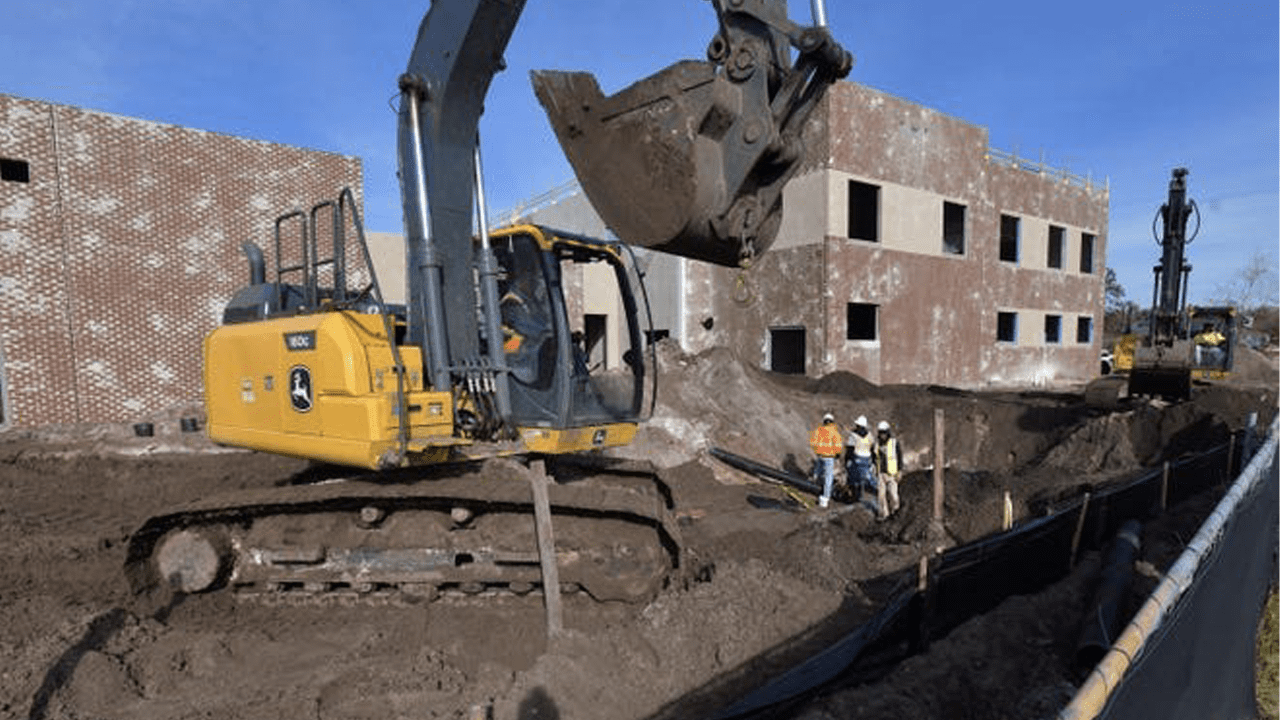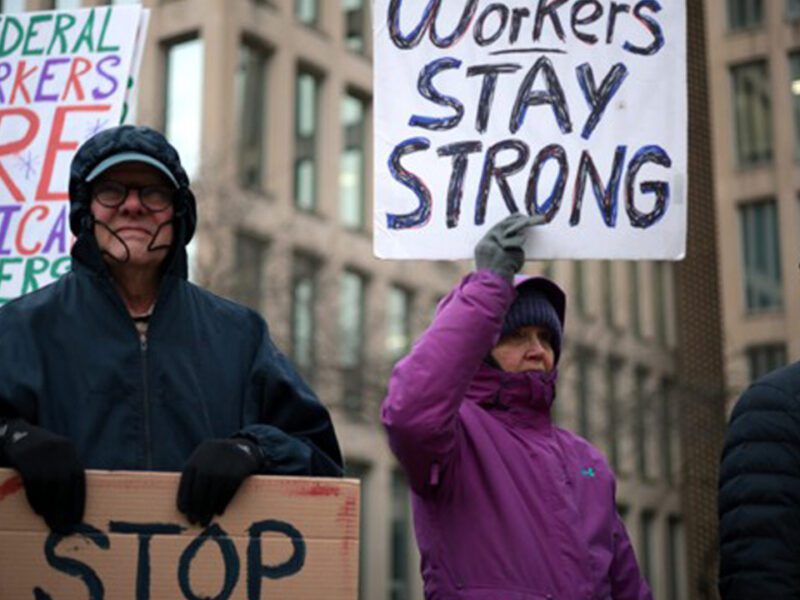
Cost for fixing Duval school buildings could hit $3.9 billion, putting payment in question
Florida Times-Union | By Steve Patterson | December 3, 2023
The $1.9 billion slate of school repairs and construction that Duval County voters agreed in 2020 to help finance through a half-penny sales tax could end up costing $3.9 billion, school administrators now project.
The sticker shock is being compounded by a forecast that tax revenues earmarked to pay for the 15-year worklist could fall $1.4 billion short of the new final price.
Neither budget cuts nor tax hikes have been ordered to bridge the gap, and it’s not certain the new counts will be entirely accurate either.
But the twin forecasts underscore the administrative headaches the school system is facing trying to deliver all 180 separate projects, including building 28 new schools, in the school district’s master facility plan.
“We’re going to have to make some decisions in terms of funding” for the work, Erika Harding, the district’s assistant superintendent for operations, told School Board members in a workshop last month. “And some of the projects are going to require some cutbacks.”
While it’s not clear how the board will respond, the forecasts will be “what’s driving future decisions and conversations,” School Board member Lori Hershey said after the board took up the subject recently.

Infrastructure work is underway on the grounds of what will become the new Chaffee Trail Middle School on Jacksonville’s Westside. Bob Self/Florida Times-Union
“In the last two years, rising material and labor costs have disrupted construction projects, causing budget overruns, delays and quality issues,” said a construction update prepared for board members. “While costs seem to be stabilizing, it’s too early to say the risks are fully mitigated.”
Overheated inflation and supply problems that rattled the country’s economy in the last few years are getting most of the blame for the school district’s worries.
Price inflation is hardly unique to Jacksonville, of course.
From 2018 to last year — five years — the cost for building an elementary school in Florida rose about 21 percent statewide, to an average of $264 per foot, according to data compiled by the Florida Department of Education
But price hikes Duval County schools face now dwarf changes that have seemed normal in past years.
The first school built with sales tax money, Rutledge H. Pearson Elementary, opened in August at a price of $40.4 million — 41 percent more than first planned.
Chaffee Trail Middle School is under construction on the Westside now, slated to end up costing $60.7 million, or 57 percent more than originally expected.

A worker opens the bottom of a bag of mortar ingredients over a mixer on the construction site for the new Chaffee Trail Middle School on Jacksonville’s Westside. The $60.7 million school is scheduled to open in the summer. Bob Self/Florida Times-Union
Replacements for Highlands Elementary on the Northside and Southside Estates Elementary on the Southside are supposed to open next year at costs of $53.4 million and $56.2 million, respectively — about 85 percent and 94 percent above costs the district figured when the facility plan was finished in 2019.
And the new Ribault High School, slated to open in 2025 to replace the 1957 Northside original, is now budgeted to cost $120.5 million, 107 percent above the plan’s 2019 price of $58.1 million.
School officials “used standard construction costs” to estimate expenses originally, retired Assistant Superintendent Paul Soares told School Board members last month, noting that inflation rates had usually run around 2 percent per year of lower during the decade before the 2019 plan was created.
But prices for concrete, steel, lumber and more “clearly skyrocketed” after the pandemic’s 2020 arrival disrupted supplies for everything, he said. Wages for building crews surged too.
Just as important, Soares said, builders handled delays in getting basic equipment such as generators and switch gears by using short-term rentals and passing on the cost to customers. The extra expense drove up bids for school construction work, which have a contractor’s bottom-line cost called a guaranteed maximum price or GMP.
“Putting together his GMP, he has to factor in rental,” Soares told the School Board. “So, he factors in rental switch gears, rental generators, rental HVAC units, and then he has to install during construction and then plan for it to be removed when the new equipment comes in and then [the new equipment will] be reinstalled.”
The extra rental costs won’t be necessary if supply chains someday get back to pre-pandemic form.
But for now, “this is really one of the things that impacted everything,” said Soares, who oversaw the school district’s work bringing the facility plan’s first projects to reality.
Economic heat that inflated prices has also been helping inflate revenues the school system collects from both sales tax and property taxes.

Signage on the construction fence around the site of what will become the new Chaffee Trail Middle School shows what the school should look like when it opens in the summer on Jacksonville’s Westside. Bob Self/Florida Times-Union
The district counted on some revenue growth, hiring a financial consultant who projected in 2019 that sales tax income growing 2 percent growth yearly to generate $1,261,003 over the tax’s 15-year lifetime.
With property taxes providing $1 for facilities work for every $3 in sales tax, the school district was supposed to have $1.9 billion to pay for new construction, repairs of some existing buildings and installation of equipment like IT systems and building-security devices that were part of the facility plan.
New projections say those two fatter streams of revenue could really produce about $3.5 billion. But school officials reported that changes in state law will leave only about $2.5 billion with the school district, while charter schools will get about $860 million because of the number of students they teach.
If both the higher building cost estimates and new tax revenue estimates turn out to be right, the school district will have a $1.4 billion budget hole to fill somehow.
There’s a real chance the forecasts won’t be right, however.
The new figures assumed tax revenue would grow by just 1 percent annually, half of the rate pictured in 2019.
The lower growth was calculated “to be conservative,” Soares told the School Board.
A financing plan that school administrators offered to manage the new expenses could leave a $340 million shortfall if tax money rose at just the 1 percent. But that gap would fall to $120 million if tax revenue growth was 2 percent yearly and would be covered entirely if that growth reached 3 percent yearly.

Workers remove construction support poles from part of the shell of what will become the new Chaffee Trail Middle School on Jacksonville’s Westside. Bob Self/Florida Times-Union
To pay the facility plan’s higher bills, school district staff have recommended that the board issue additional bonds at four points between the 2024-25 and 2032-33 school years.
The extra bond issues wouldn’t automatically require tax increases. But they would keep the school district indebted longer —how indebted will depend on each bond issue’s cost —because the school district wouldn’t have them paid off by 2036 like the original bonds for the facility plan, which school officials call the MFP.
School district administrators also recommended committing a larger part of the district’s property tax revenue to paying off the bond.
That was pitched as a step to focus more school system spending to reduce debt — limiting money available for other uses — but not a recommendation to raise taxes.
If the School Board follows that advice, “we’re not increasing the millage rate we’re taking. We’re increasing the amount of millage we already get that goes to the MFP,” Soares told School Board members. “So, it’s not a tax increase. There’s no tax increase in here anywhere. Just, no millage increase.”
The extra bonds could somewhat tie the School Board’s hands financially for meeting future needs but would deliver buildings designed in 2019 to meet the county’s needs more efficiently, closing some schools that are underused and shifting students into other buildings with extra capacity.
Despite the work so far, occupancy rates at the county’s schools have dropped from 82 percent when the plan was created to 76 percent today with 33,958 seats empty early in the school year, School Board members were told last month.
Despite far-reaching plans, contracts to actually build schools are still voted on by the board one school at a time.
School Board member Darryl Willie, who became the board’s chairman last month, noted during a board workshop how much the school system’s plans might still change in the face of new circumstances.
For all the detail that officials poured into forecasting the costs and challenges of work to be done, ”these efforts will be obsolete once we shift anything,” he said.





